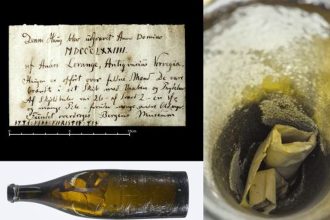Using data from the James Webb Space Telescope, scientists were able to solve one of the most important questions about the famous supernova of 1987.
According to Tekna technology and technology news service, in the investigations related to the data of the James Webb telescope, scientists realized that there is no black hole in the heart of this supernova. In 1987, a burst of light from a dying star in the Modulian cloud caused a supernova. After that, astronomers sought to discover the remaining core of the star. Since then, astronomers have been observing stellar remnants located near the center of the supernova.
Thanks to the James Webb Space Telescope, scientists can discover the nature of the core of this supernova. According to these data, not only a black hole but also a neutron star was created as a result of the explosion. For this reason, the foreign materials are dispersed into the space, but due to the gravity of the core of this star, it has become a super-dense mass. The nature of the remaining mass due to the explosion depends on the initial mass of the star, and according to calculations, it can turn into a neutron star between 8 and 30 times the solar mass.
Using the infrared capabilities of the James Webb Telescope, scientists penetrated the halos around this supernova. They had previously detected the existence of a neutron star in the remnant of this supernova. But it was not possible to penetrate into the remaining dust and confirm this. Previously, in 2022, data from the remnants of this supernova was published by James Webb. After that, the composition of the gases inside was checked using infrared instruments and spectroscopic methods.
In these data, it was found that heavy argon and sulfur gases that have lost their outer electrons are present near the center of the supernova remnant. This process, called ionization, involves the addition or removal of electrons. By using a modeling and its implementation, the researchers were able to provide an explanation for the existence of this particular type of ionization, and that was the existence of a neutron star.
RCO NEWS
















